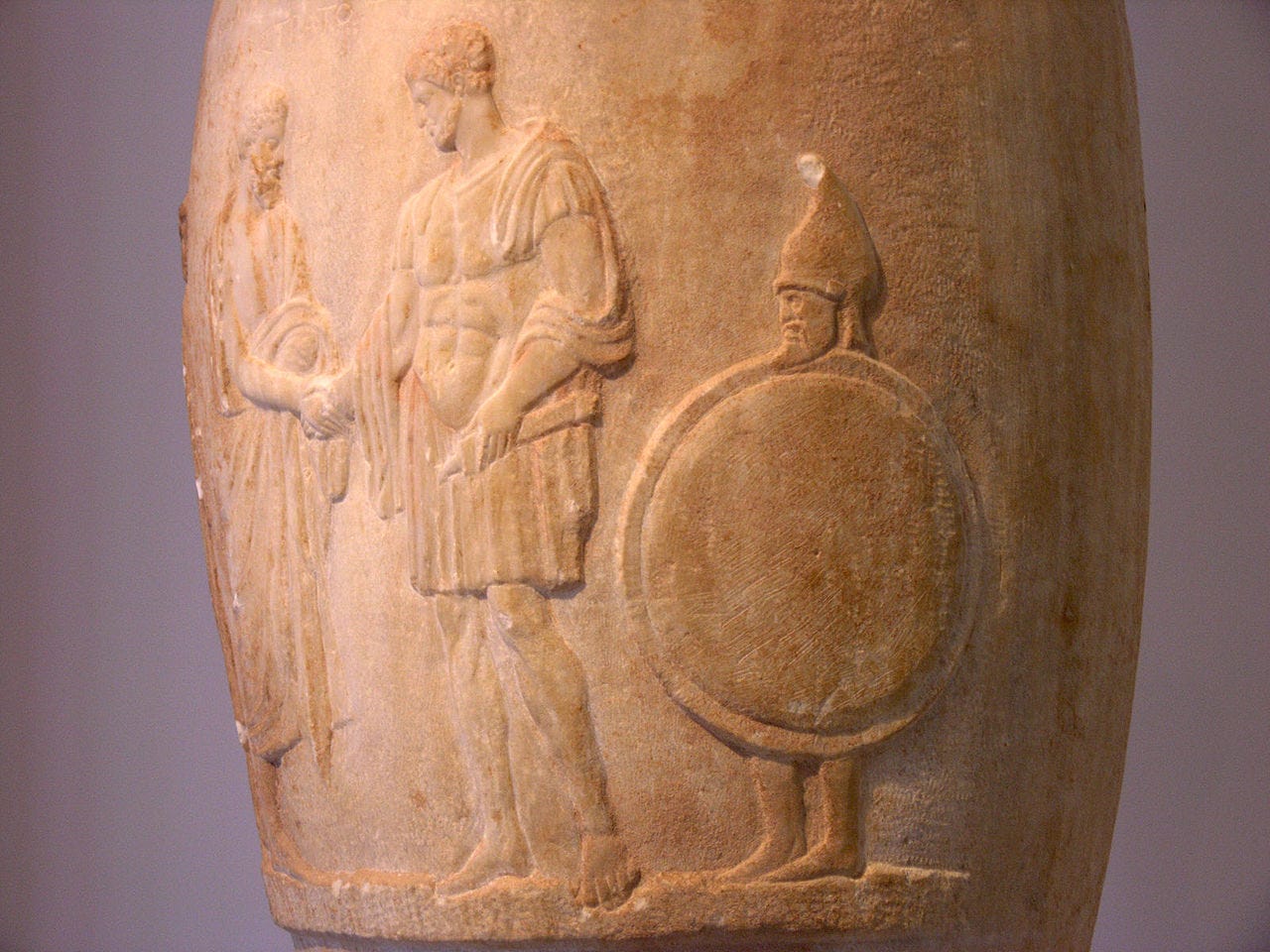A Shield-Bearing Slave in Comic Relief
Hoplite humor from ancient Athens
Sculpted of marble from Mount Pentelicus, this loutrophoros was unearthed at the ancient port of Piraeus. The term literally translates as “bath-water carrier.” Most of these long-necked, two-handled pottery vessels have been found in pieces at the demosion sema, or public cemetery of Athens. Funerals and weddin…



